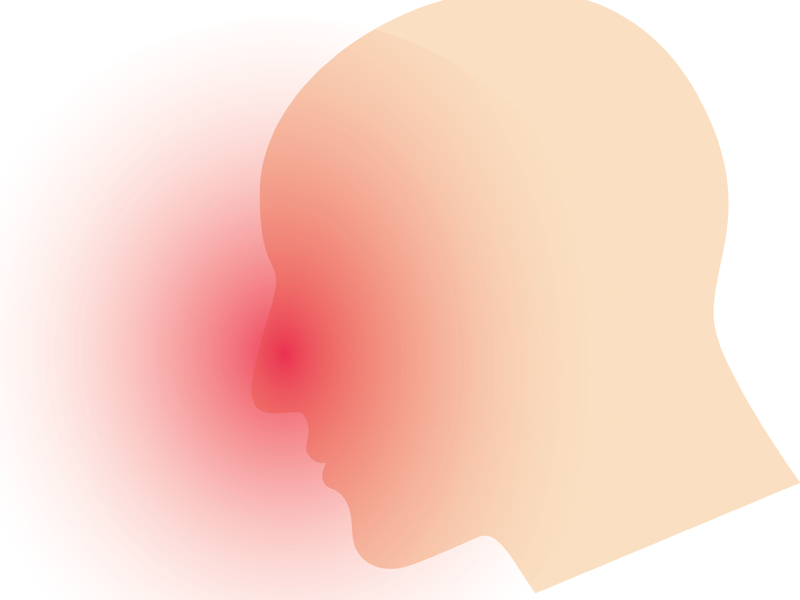
The bhang pollen count causes allergies from July to September, according to researchers. In a 2012 World Allergy Organisation study, Shahid Abbas of the Allergy and Asthma Centre in Islamabad and seven other researchers recorded the bhang weed pollen counts each day for three years. To give you an idea, the bhang weed put out 2,040 grains of pollen per cubic metre of air on August 18 in 2005.

The highest pollen count came from the Paper Mulberry or Broussonetia papyrifera in March 2006 at 34,320 pollen per cubic metre of air. Compare this with the highest recorded elsewhere in the world. In Cordoba city, 38,393 olive pollen grains per cubic metre were detected in the air on one day in 1991 — the highest in a study of 25 years of data.
Researchers at the Rawalpindi Medical College and Quaid-i-Azam University had similar findings in a 2009 paper published in the Pakistan Journal of Medical Research. Out of 702 people tested, 48% were allergic to the Paper Mulberry tree and 20% reacted to the Bhang weed pollen. They wrote that many patients with the pollen allergy are hospitalised in Islamabad in the spring (February to April), fall (July to September), and after the monsoons.
“Pollen are tiny powder-like biological particles released from trees, weeds and grasses for the purpose of fertilizing other plants,” says Dr Tarique Zahid Khan, an ear, nose and throat or ENT specialist.
When pollen grains get into the nose of someone who’s allergic, they send the immune system into overdrive. “When pollen enters our body, the immune system, mistakenly sees the pollen as foreign invaders, releases antibodies or substances that normally identify and attack bacteria, viruses, and other illness-causing organisms.” The antibodies attack the allergens, which leads to the release of chemicals called histamines into the blood, adds Dr Zahid. Histamines trigger sneezing, a runny nose and itchy eyes.

Pollen can travel for miles, spreading a path of misery for allergy sufferers along the way.
Allergy symptoms tend to be particularly high on breezy days when the wind picks up pollen and carries it through the air. Rainy days, on the other hand, cause a drop in the pollen counts because the rain washes away the allergens.
Although there is no cure for pollen allergy, there are a number of ways to prevent them. “Vaccination at proper time before the commencement of spring season can help avoid adverse consequences of pollen allergy,” says Dr Syeda Maria Ali, an assistant professor at the International Islamic University, who wrote a paper on the health impact of allergenic pollen grains with three other experts. “Wearing masks during pollen season is recommended.”
Air-conditioning and keeping windows and doors closed help. Dry clothing and bedding in the dryer instead of hanging them outside. Pollen can stick to the fur of your pets so be careful when letting them in your bedroom or allowing them to play outside.

Researchers have found that death caused by asthma in patients aged between 5 and 34 years was twice as higher on days when fungal spore concentrations were at or above 1000 spores/m3. In spring the pollen count for the Paper Mulberry can reach up to 30,000/m3 air in a single day.
410m to 7,000m
Pollen are produced in a season by trees like the Paper Mulberry
80%
of the total pollen count, the highest in the air in 2005, 2006 and 2007 came from the Paper Mulberry tree.
The Cannabis sativa or the Bhang weed grows in all sectors of Islamabad
8,000 to 10,000
litres of air are inhaled by one person in 24 hours
1,430 pollens
Counts went as high as per cubic metre of air per hour
80 to 110 pollen
allergy patients visited PIMS daily for nebulization and oxygen basis during the Spring season, according to a study by researchers at the International Islamic University published in the Pakistan Journal of Botany in 2013
220 out of 1,000 patients tested positive for
allergic reactions to the bhang weed at the Pakistan Allergy, Asthma & Clinical Immunology Centre in Islamabad
Weed pollen counts cubic metres of air per day
Low 1 to 9
Moderate 10 to 49
High 50 to 499
Very high over 500
Published in The Express Tribune, Sunday Magazine, August 18th, 2013.
Like Express Tribune Magazine on Facebook, follow @ETribuneMag on Twitter to stay informed and join the conversation.
COMMENTS (1)
Comments are moderated and generally will be posted if they are on-topic and not abusive.
For more information, please see our Comments FAQ









































My personal experience was that the ' flu shot ' worked the first time but the next year it did not. Then tried homeopathy and it worked slowly but effectively and now I'm into my third year.